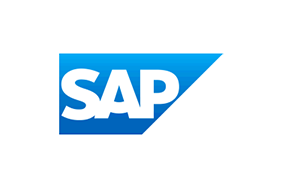The Take: Rivers Running Low Threaten Commerce
Published 09-14-22
Submitted by SAP

What’s News
Drought conditions in much of North America and Europe are resulting in water restrictions and extremely low water levels in many rivers threaten transportation of supplies. Europe has been particularly hard hit during a summer of record temperatures and months of below-average rainfall.
Two major river arteries – the Danube and the Rhine – have already become almost impassible in some places. This is threatening transportation of grain and other commodities on the 1,800-mile Danube, which flows into the Black Sea. Also impacted are supplies of coal and diesel fuel carried by barge on the Rhine that are essential to the economies of Germany, the Netherlands and Switzerland.
SAP’s Take
Low water levels in Europe’s main navigable rivers threaten to exacerbate the supply chain problems already caused by the COVID-19 pandemic and the war in Ukraine.
As Richard Howells, a supply chain expert at SAP, noted, the ships and barges traveling down the Rhine are essential modes of transport for shipping products and materials through western Europe, and Germany in particular. It is estimated that 80% of Germany’s water freight is transported on the Rhine, meaning that millions of tons of goods are shipped via the river every year.
“Transporting goods is a 24/7, 365 day-a-year operation, requiring coordination and collaboration between multiple entities,” Howells said. “When a key mode of transport — such as shipping — is disrupted by low river levels, it becomes a logistical nightmare.”
Either more vessels carrying lighter loads must be used so that they will sit higher in the water, or alternate modes of transport must be procured, usually at a higher cost. “This will have additional knock-on effects, such as higher congestion on the roadways, with increased emissions that will impact already challenging sustainability goals,” he warns.
Low river levels also have dire consequences for other forms of commerce. In the U.S., the federal government has stepped in after western states failed to reach agreements to reduce water use from the drought-plagued Colorado River, issuing cuts that will affect Nevada, Arizona and Mexico.
In France, the water in the Rhone and Garonne rivers is too warm to cool some of the country’s nuclear reactors, adding to a power crisis. And in Italy, agriculture is impacted by low water levels in the Po River, which feeds the country’s rice fields.
Pointedly, some economists fear the drought in Europe could tip a region already under stress from the war in Ukraine into recession.
Contact:
Paul Taylor, Editorial Director of SAP News Network
+1 (212) 653-9607, paul.taylor04@sap.com

SAP
SAP
SAP’s strategy is to help every business run as an intelligent, sustainable enterprise. As a market leader in enterprise application software, we help companies of all sizes and in all industries run at their best: SAP customers generate 87% of total global commerce. Our machine learning, Internet of Things (IoT), and advanced analytics technologies help turn customers’ businesses into intelligent enterprises. SAP helps give people and organizations deep business insight and fosters collaboration that helps them stay ahead of their competition. We simplify technology for companies so they can consume our software the way they want – without disruption. Our end-to-end suite of applications and services enables business and public customers across 25 industries globally to operate profitably, adapt continuously, and make a difference. With a global network of customers, partners, employees, and thought leaders, SAP helps the world run better and improve people’s lives.
More from SAP

